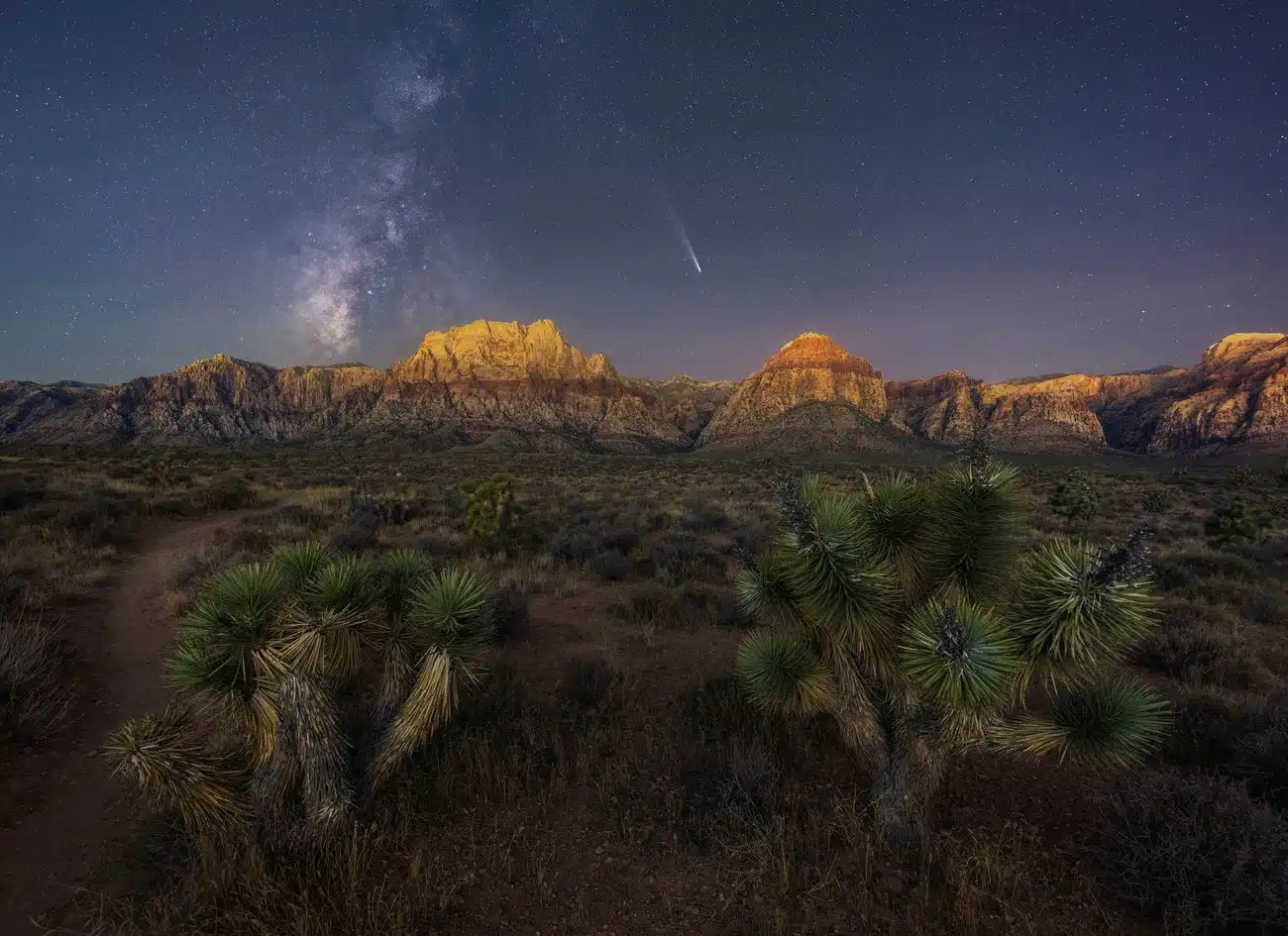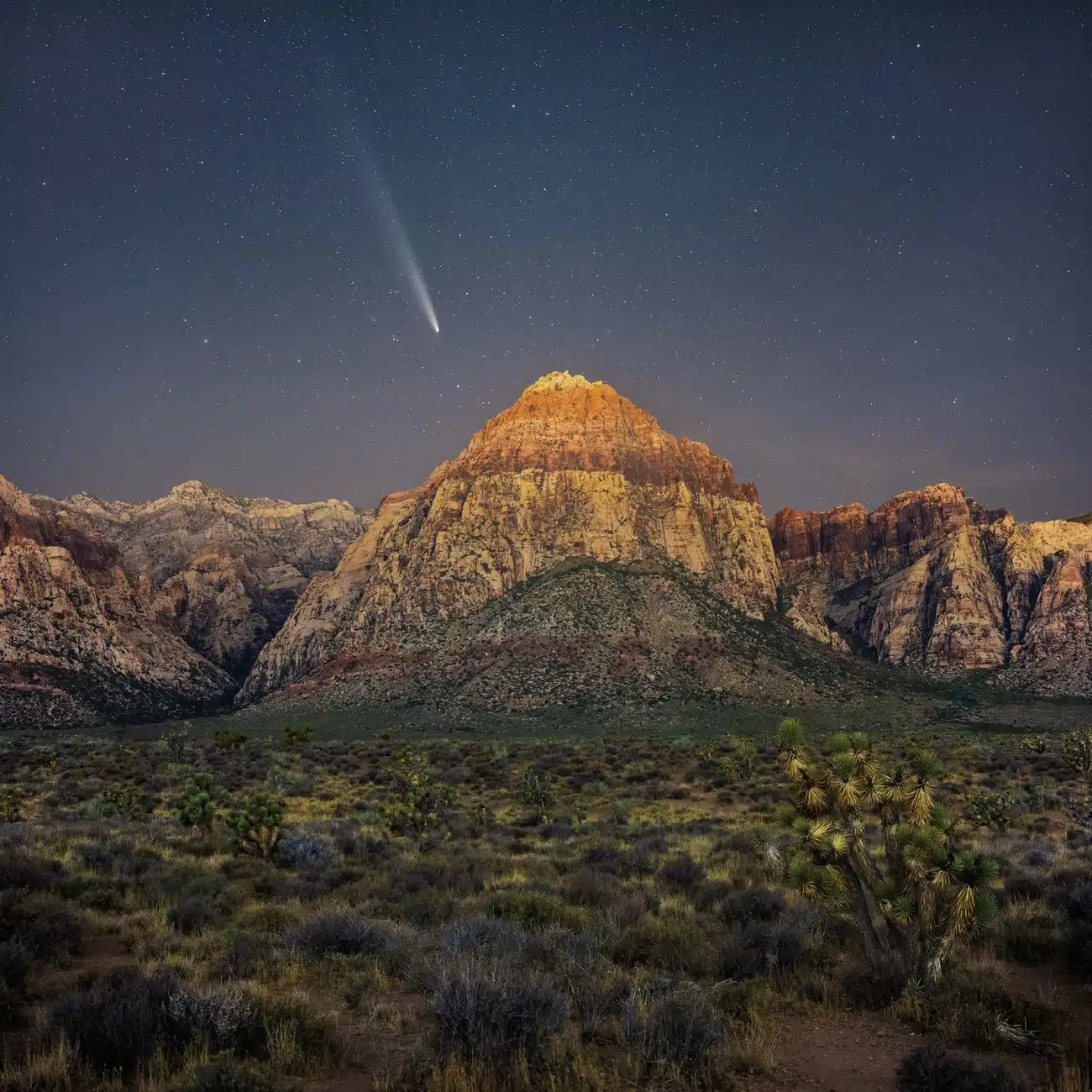
Travel photographer Dan Zafra of Capture the Atlas has a knack for putting himself in a position to take exceptional images. So it comes as no surprise that when given the chance to document a rare astronomical event, he was up for the challenge. Zafra traveled to a conservation area outside Las Vegas to capture Comet Tsuchinshan–ATLAS, or Comet A3, as it fell through the sky.
While Zafra often journeys to remote locations for astrophotography, circumstances kept him closer to home this time. Luckily, in just 20 minutes, he was able to drive to Red Rock Canyon National Conservation in Nevada’s Mojave Desert. Not only did it provide a scenic backdrop, but its lack of light pollution also allowed Zafra to capture the whole event.
In his wide-angle shot, Zafra even managed to sneak in the Milky Way, which will soon fade from view until later in the winter. Comet Tsuchinshan–ATLAS is nestled between rocky peaks, enjoying its journey through the sky. This comet, which was discovered in January 2023, has been closely followed by astronomers and stargazers. Since it was first discovered, it faded in and out of view several times, but was visible to the naked eye since September.
Zafra’s images, which were taken on October 20, actually show the comet somewhat faded as compared to earlier in the month. Just eight days earlier, it made its closest approach to Earth—44 million miles—and was at its peak brightness. Given the clear view of Tsuchinshan–ATLAS in the photos, one can imagine just how bright that must have been.
For Zafra, the opportunity was a good excuse to get his camera out and head outside. And it was also a reminder that excellent photography can be made almost anywhere.
“Of course, there are more impressive dark skies in many places around the Southwest and the world, and that’s usually where I like to go,” Zafra shares. “However, we tend to forget that we can also practice, enjoy, and capture beautiful and meaningful images in places close to home.”
Photographer Dan Zafra traveled to the Mojave Desert to capture images of Comet Tsuchinshan–ATLAS.

